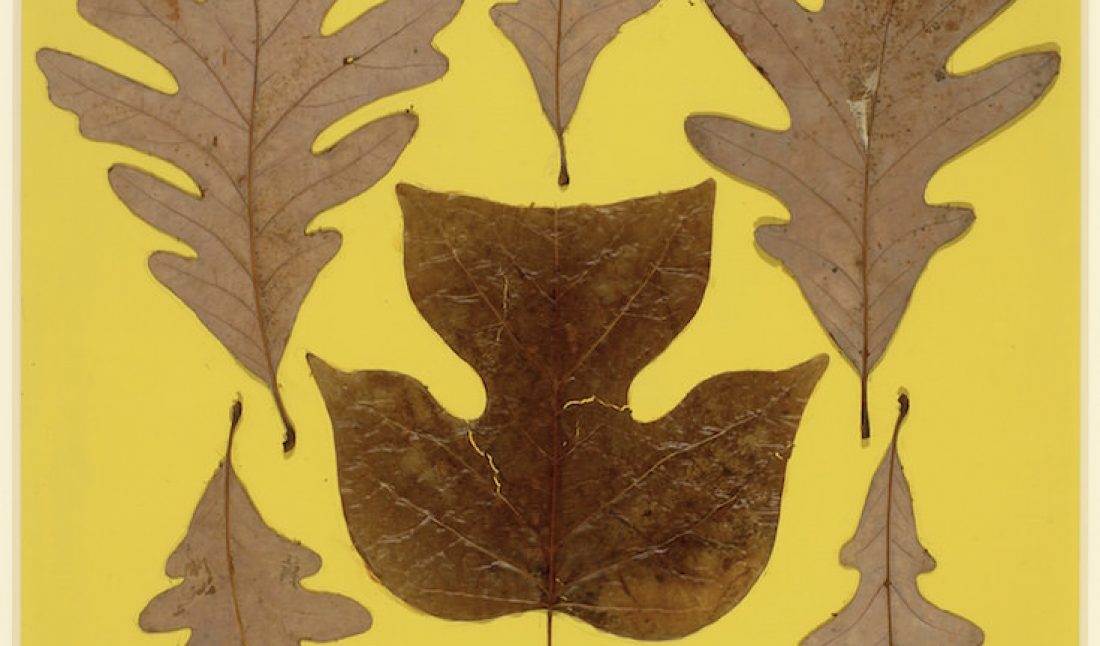When Ann Philbin became the director of the Hammer Museum in Los Angeles in 1999, she planned to only stay five years. But 17 years later, she’s still there, and still giving shape and vision to a community-engaged and driven contemporary art institution. We spoke with Philbin for Whitewall‘s spring 2016 Art Issue about her role as director and this spring’s Catherine Opie and Black Mountain College exhibitions.
WHITEWALL: You are responsible for totally revitalizing the museum since you arrived in 1999. What initial potential did you see in the museum?
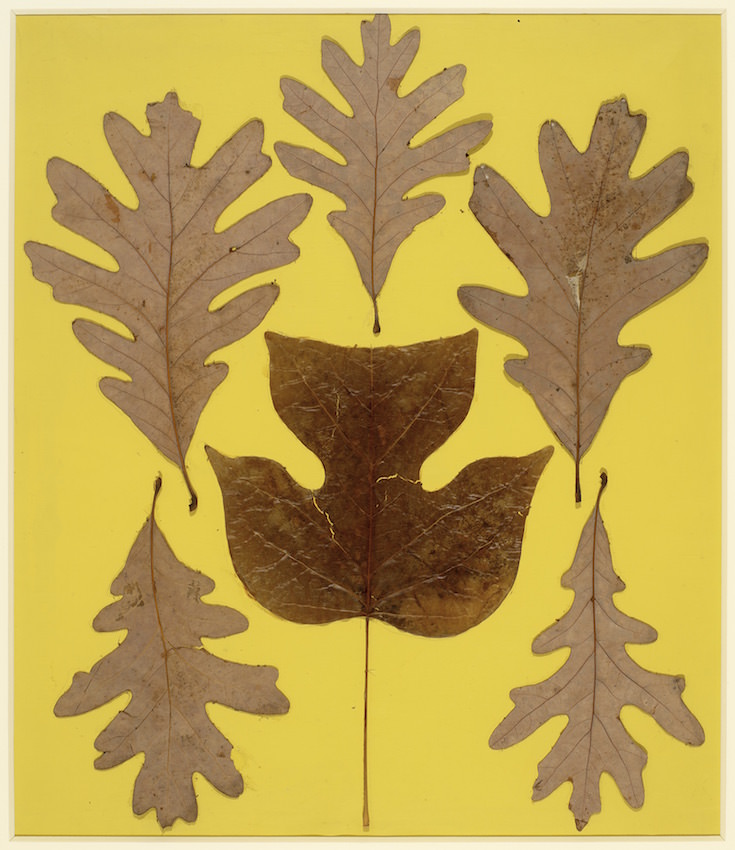 Josef Albers, Leaf Study IX, ca. 1940. Leaves on paper. 28 × 24 ¾ in. (71.1 × 61 cm). © The Josef and Anni Albers Foundation/Artists Rights Society New York. Photo: Tim Nighswander/Imaging 4 Art.
Josef Albers, Leaf Study IX, ca. 1940. Leaves on paper. 28 × 24 ¾ in. (71.1 × 61 cm). © The Josef and Anni Albers Foundation/Artists Rights Society New York. Photo: Tim Nighswander/Imaging 4 Art.
ANN PHILBIN: I was very happy in New York and I never expected to leave, but I surprised myself by taking this job. I suppose the first thing that signaled potential for me was the city it was in. Los Angeles was a hotbed for young artists, even 16 years ago, but there were few options for them to show their work. There were not that many galleries here and no museums paying attention to the emerging scene. I knew we could make a difference that way. Also, I took one look at this awkward, uninhabited courtyard of the Hammer and realized it was perfect for a community gathering space—which Los Angeles sorely needed at the time. I was interested in making a cultural center as opposed to a pure art museum. Since that time we’ve transformed the courtyard, built the gorgeous Billy Wilder Theater, added a restaurant and our latest addition—the beautiful John V. Tunney Bridge—which connects both sides of the galleries upstairs. The whole space has come alive—it’s an urban park.
WW: You’ve said that you thought you would stay for just five years or so, but around year two you totally fell in the love with the city of Los Angeles.
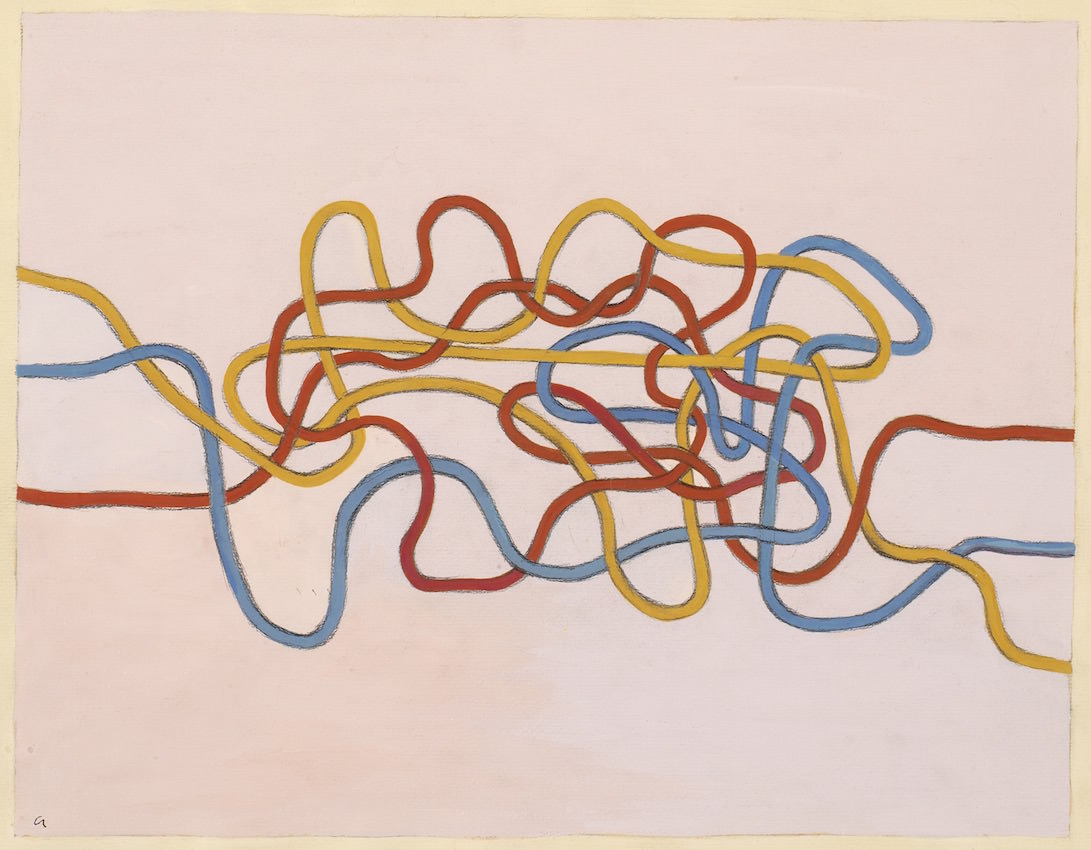 Anni Albers, Knot 2, 1947. Gouache on paper. 17 × 21 1/8 in. (17.8 × 53.7 cm). © The Josef and Anni Albers Foundation/Artists Rights Society New York. Photo: Tim Nighswander/ Imaging 4 Art.
Anni Albers, Knot 2, 1947. Gouache on paper. 17 × 21 1/8 in. (17.8 × 53.7 cm). © The Josef and Anni Albers Foundation/Artists Rights Society New York. Photo: Tim Nighswander/ Imaging 4 Art.
AP: I fell in love with the vibrancy of the creative community here. It felt like New York in the eighties and nineties—a city defined by its creative population. Also, I love that this is a young city. There is no “establishment” here that dictates what you can and cannot do; if you have an entrepreneurial spirit and ideas, this is a great town to be in. Finally, I’m also a nature geek so I spend a lot of time outdoors. Even though I’m an East Coast girl, I don’t really like the cold anymore.
WW: Los Angeles magazine described the museum’s audience this way: “You go to MOCA to see something and to LACMA to experience a show. At the Hammer, there’s an emulsion of ideas that sticks to everything. It’s a lifestyle haunt.” Would you agree with that?
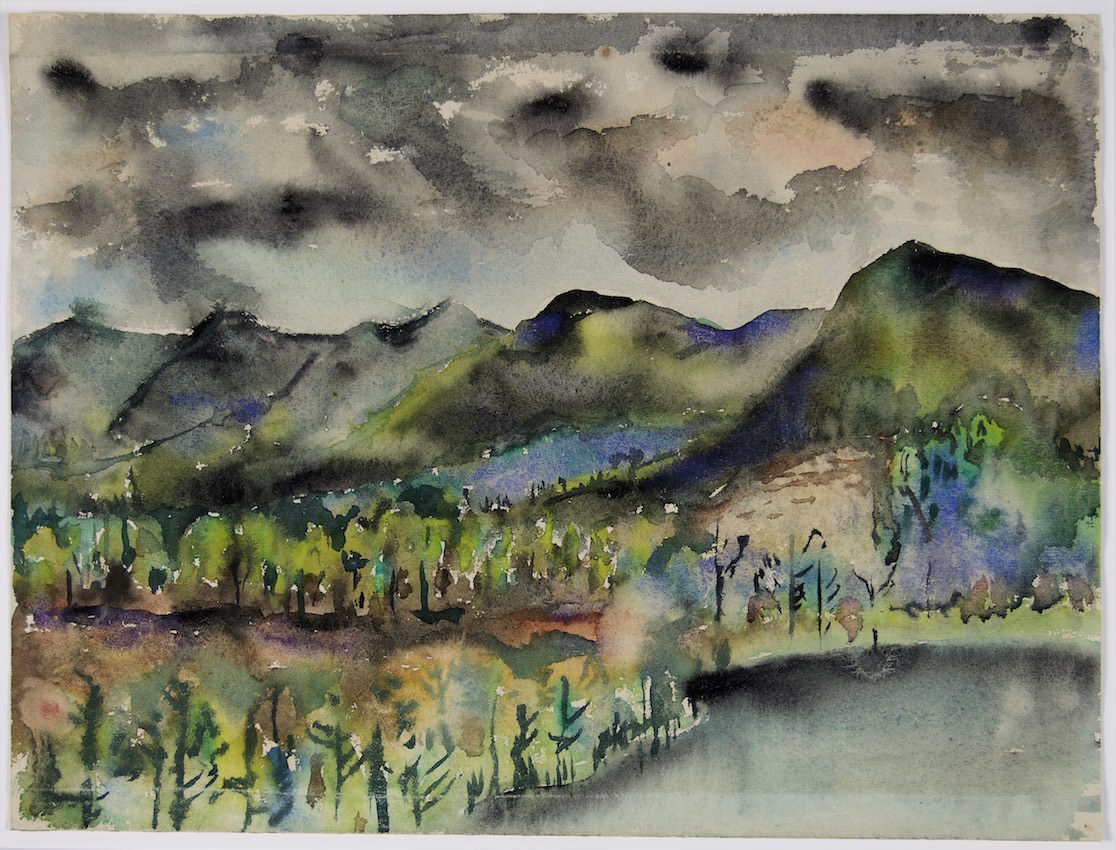 Joseph Fiore, Black Mountain, Lake Eden, 1954. Watercolor on paper. 14 × 18 in. (35.6 × 45.7 cm). Asheville Art Museum, Black Mountain College Collection.
Joseph Fiore, Black Mountain, Lake Eden, 1954. Watercolor on paper. 14 × 18 in. (35.6 × 45.7 cm). Asheville Art Museum, Black Mountain College Collection.
AP: I appreciate that assessment and I agree that the Hammer has a kind of mindset—or gestalt—that defines us differently than most museums. We are about culture of all kinds—high, low, popular, refined. We weave together art, music, dance, literature, politics, meditation, philosophy, and ideas of all kinds for our hungry and adventurous audience. We have made a community that sees us as their town hall. We see the same people often several times a week—students, artists, retirees. It’s a diverse group. I suppose you could say we are a “lifestyle haunt” in that our audience may not necessarily know what they are coming to see but they trust that it will be surprising and worth braving traffic for.
WW: You’ve also said that one of the benefits of the Hammer, or strong points, is that you can be nimble, you can experiment, and even make mistakes. How do you make sure you can maintain that level of nimbleness?
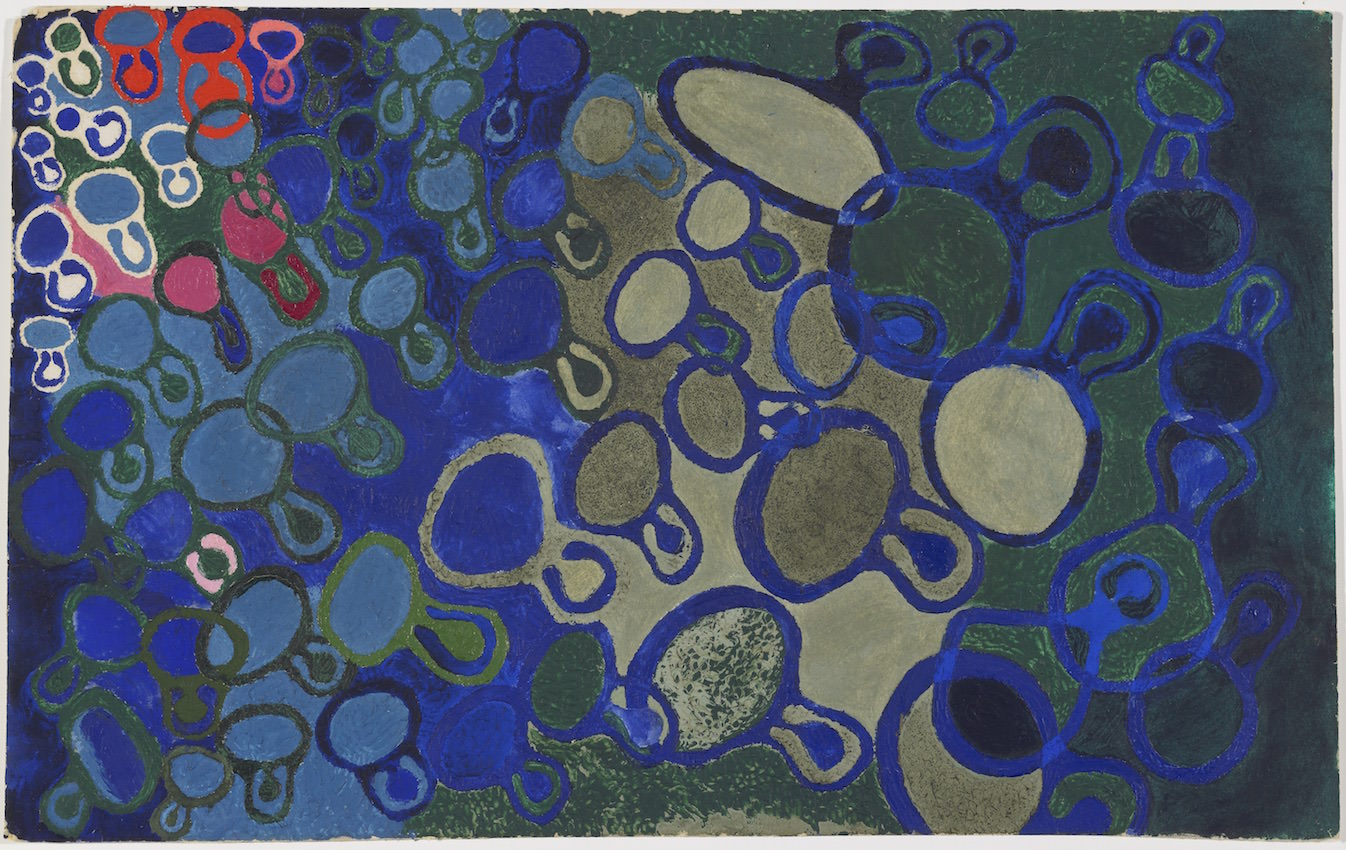 Ruth Asawa, Dancers, ca. 1948. Oil on blotting paper. 12 × 19 in. (30.5 × 48.3 cm). Weverka Family Collection. © Estate of Ruth Asawa. Image courtesy the Fine Arts Museums of San Francisco
Ruth Asawa, Dancers, ca. 1948. Oil on blotting paper. 12 × 19 in. (30.5 × 48.3 cm). Weverka Family Collection. © Estate of Ruth Asawa. Image courtesy the Fine Arts Museums of San Francisco
AP: We take our clues from artists; since they are our core audience it is imperative that we stay nimble and experimental. That’s not that easy for an institution to do, because formula and bureaucracy are the antithesis of creativity. But our staff is committed to finding that balance, and we challenge ourselves all the time. We have an artist advisory council that also keeps us on our toes and the university connection and ethos is also conducive to experimentation. UCLA is a public research university, and the Hammer embraces risk in the same way. We can’t be afraid of failure and we must stay spontaneous.
WW: This spring you’ll have an exhibition by Catherine Opie and a show on Black Mountain College. Can you tell us more about those?
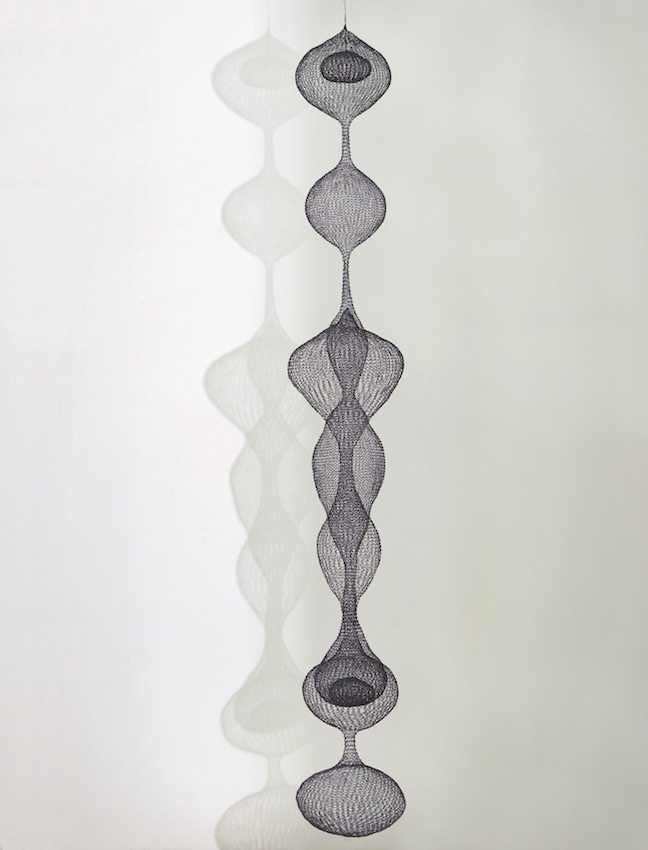 Ruth Asawa, Untitled (S. 272), ca. 1955. Copper and iron wire. 108 × 15 × 15 in. (274 × 38.1 × 38.1 cm). Private Collection. © Estate of Ruth Asawa. Photo: Laurence Cuneo.
Ruth Asawa, Untitled (S. 272), ca. 1955. Copper and iron wire. 108 × 15 × 15 in. (274 × 38.1 × 38.1 cm). Private Collection. © Estate of Ruth Asawa. Photo: Laurence Cuneo.
AP: We are thrilled to bring “Leap Before You Look: Black Mountain College 1933–1957” to the West Coast, honoring the values of the renowned experimental Black Mountain College and heralding its role in shaping major concepts, movements, and forms in postwar art and education. The exhibition, which is curated by Helen Molesworth (currently chief curator of MOCA), underscores Black Mountain College’s interdisciplinary emphasis on inquiry, experimentation, and discussion and reflects some of our deeply held beliefs in the ability of art to encourage participation in community and the world at large.
Also on view is an exhibition of portraits by Catherine Opie, one of the most important photographers of our time and a pillar of the Los Angeles art community both as artist and professor at UCLA. She is having a well-deserved moment with shows at both the Hammer and MOCA. At the Hammer, she is presenting a group of haunting and powerful portraits of fellow artists she knows and admires.
WW: With the museum celebrating its 25th year this year—and a marked increase in audience after becoming totally free last year—what sort of vision do you have for the next coming years?
AP: Becoming free was a very big deal for us, and we have seen a big increase in our audience. We recently announced the museum’s new plans to expand our space into the adjoining office tower. We will be able to increase our gallery space by 50 percent and will focus on permanent collection galleries. We will enter a capital campaign this year, and within a few years I believe you will see a dramatic change in our presence on Wilshire Boulevard as well. It’s an exciting time for us.
This article is published in Whitewall‘s spring 2016 Art Issue.






